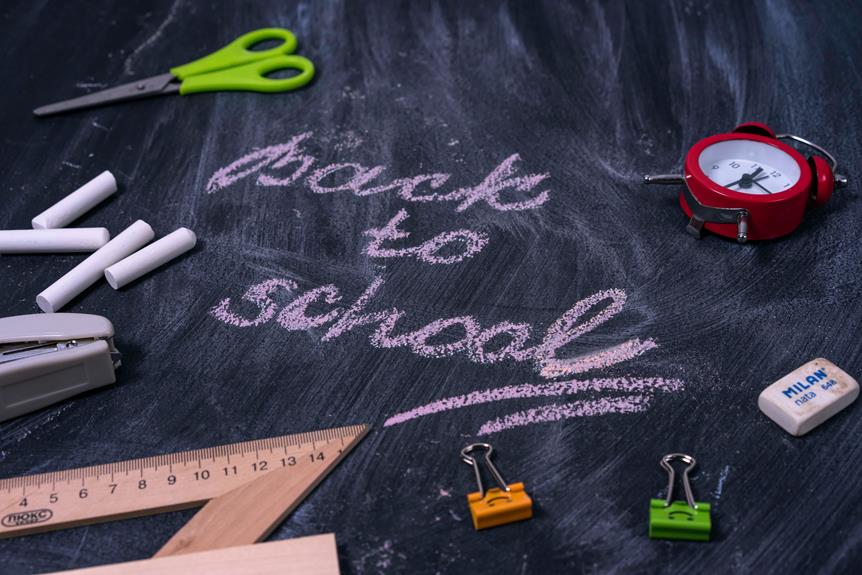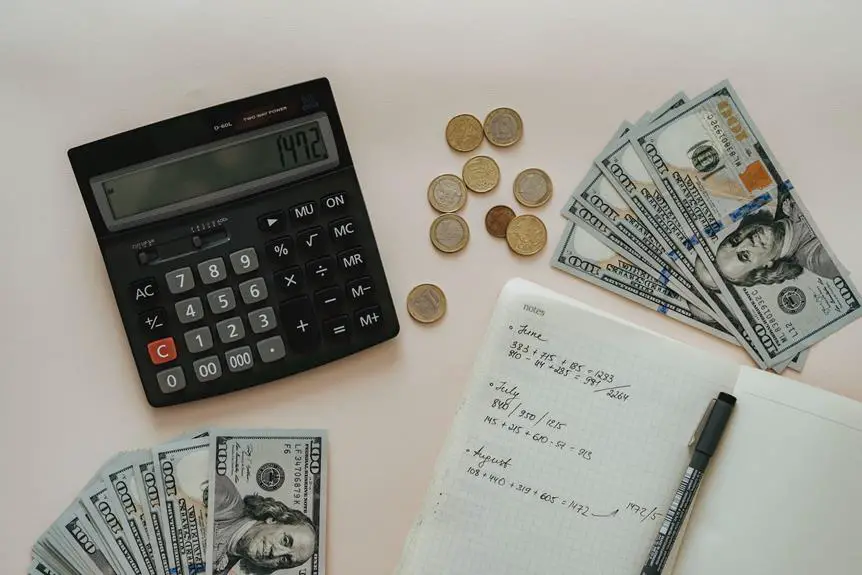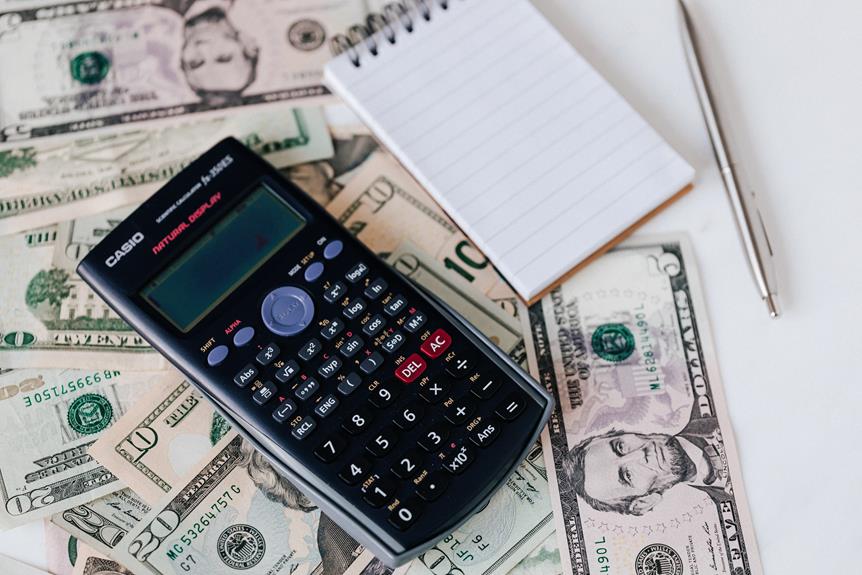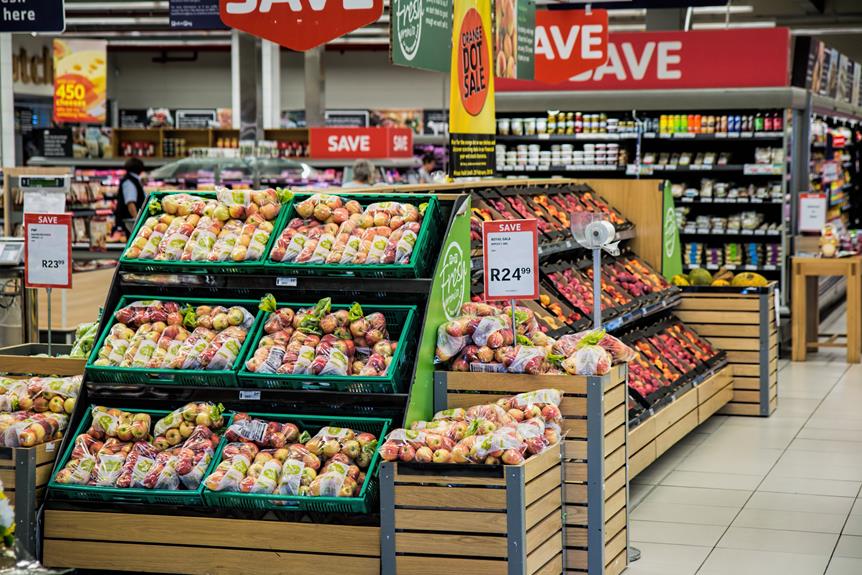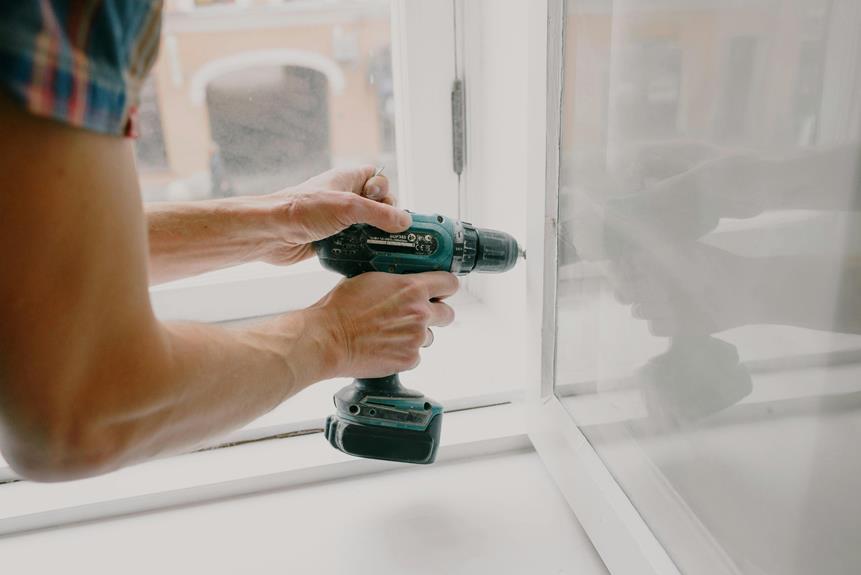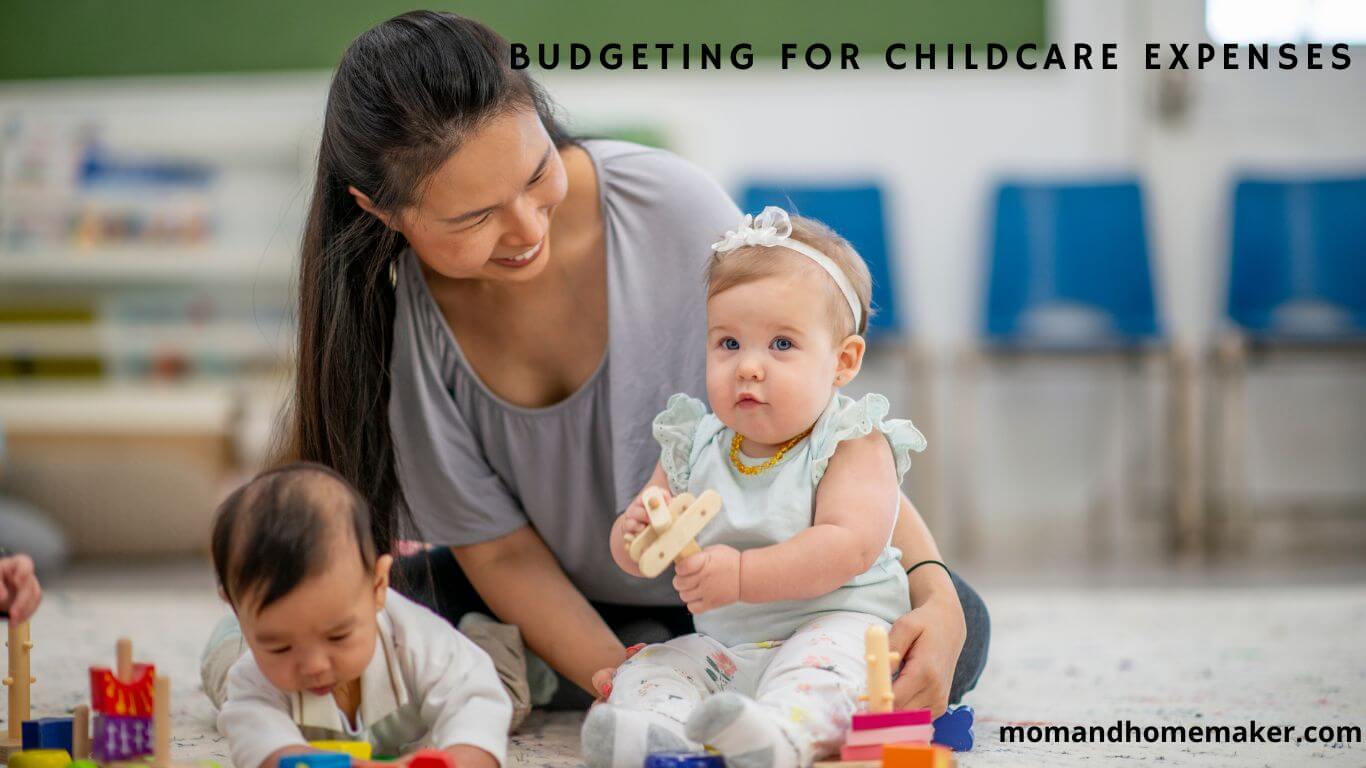Preparing for back-to-school shopping requires careful budgeting, much like a tightrope walker gracefully navigating their way across a thin wire. To ensure a smooth transition into the new school year, it’s important to be financially prepared.
That’s why we’ve compiled practical tips to help you make the most of your budget and confidently navigate the back-to-school shopping season.
Get ready to walk this financial tightrope with finesse, as we provide you with straightforward advice and specific recommendations to make your back-to-school shopping experience a success.

Set a Realistic Budget
To effectively manage your back-to-school shopping expenses, it’s important to set a practical budget that aligns with your financial capabilities and priorities. Realistic budgeting is crucial because it allows you to spend within your means and avoid unnecessary debt or financial stress.
Start by assessing your current financial situation and determining how much you can comfortably allocate for back-to-school shopping. Consider your income, expenses, and any other financial obligations you may have.
Setting financial goals is also important in this process. Think about what you want to achieve financially, such as saving for college tuition, paying off debt, or building an emergency fund. By setting specific goals, you can prioritize your spending and make informed decisions about where to allocate your budget.
Remember to be realistic and flexible with your budget. Allow room for unexpected expenses or changes in your circumstances. It’s also helpful to track your spending throughout the back-to-school season to ensure you stay on track with your budget.
Take Inventory of Existing Supplies
Before moving on to taking inventory of your current supplies, it’s important to assess what you already have from the previous school year. This step is crucial for saving money and avoiding unnecessary purchases.
Start by checking the durability of your supplies. Take a look at your backpack, lunchbox, and binders to see if they’re still in good condition and can be reused for the upcoming school year. If they’re still in good shape, there’s no need to buy new ones.
Go through your stationery items like pens, pencils, erasers, and rulers. Determine if they’re still usable or if they need to be replaced. If you have unused or partially used notebooks, consider repurposing them for the new school year. You can remove the used pages and reuse the rest.
Take a look at your art supplies. Are your markers still vibrant and are your paintbrushes in good shape? If so, keep them for another year. Assessing the condition of your supplies will help you avoid unnecessary expenses and make more informed decisions when shopping for new items.
Lastly, if you find that you have extra supplies that you won’t be using, consider donating them to someone in need. By doing so, you not only declutter your space but also contribute to the community.
Research and Compare Prices
Start by researching and comparing prices for the items on your back-to-school shopping list. It’s important to find the best deals and make the most of your budget. With a little bit of effort, you can save money and still get everything you need for the new school year.
When it comes to researching prices, take advantage of the internet. Look up different stores and websites to compare prices for the items on your list. Make sure to check for any discounts or promotions that may be available. It’s also a good idea to read reviews from other customers to ensure you’re getting a quality product.
Comparing deals is another important step in finding the best prices. Look for sales, coupons, and special offers that can help you save even more money. Some stores may also price match, so if you find a lower price elsewhere, don’t hesitate to ask if they can match it.
Make a List of Essential Items
When preparing for the upcoming school year, it’s important to have a comprehensive list of the essential items you’ll need. By organizing your needs and budgeting wisely, you can avoid overspending. Here is a simple table to help you plan:
| Essential Items | Budgeting Techniques |
|---|---|
| School supplies | Set a spending limit |
| Backpack | Compare prices |
| Uniforms/clothing | Look for discounts |
| Lunchbox | Use coupons |
| Textbooks | Buy used books |
| Stationery | Shop during sales |
Having a clear list of essential items allows you to prioritize your spending and avoid impulse purchases. Start by determining the necessary school supplies and set a budget for each category. Research and compare prices to find the best deals, and consider buying in bulk to save money.
Look for discounts and use coupons to reduce the cost of uniforms and clothing. Consider buying used textbooks or renting them to minimize expenses. Lastly, keep an eye out for sales and take advantage of special offers to get the best value for your money.
With this comprehensive list and budgeting techniques, you can stay organized and make smart choices when shopping for back-to-school essentials.
Prioritize Needs Over Wants
When making a back-to-school shopping budget, it’s important to prioritize your needs over your wants. Teaching kids about financial responsibility and making smart spending choices are important skills they’ll carry with them throughout their lives.
Start by making a list of the essential items your child will need for school, such as backpacks, notebooks, and pencils. These items are necessary for their education and should be the top priority when budgeting.
Once you’ve identified the needs, you can consider the wants. It’s important to involve your child in this process and explain the difference between needs and wants. This will help them understand the importance of making smart spending choices.
While it’s natural for children to have wants, it’s important to teach them how to prioritize and make responsible financial decisions.
Encourage them to save up for their wants or find ways to earn money to purchase them. This will help them develop a sense of financial responsibility and make them more mindful of their spending habits.
Look for Sales and Discounts
To make the most of your back-to-school shopping budget, keep an eye out for sales and discounts. Finding great deals and comparing prices and quality can help you save money and make your budget go further.
When shopping for school supplies, clothing, and electronics, it’s important to be a smart shopper and take advantage of sales and discounts.
One way to find the best deals is by signing up for newsletters or following your favorite stores on social media. They often send notifications about upcoming sales and discounts exclusively to their subscribers or followers.
Another great way to save money is by comparing prices at different stores. Don’t hesitate to shop around and see if you can find the same item for a lower price elsewhere.
To help you in your search for sales and discounts, here is a helpful table:
| Store Name | Sales and Discounts |
|---|---|
| Store A | 20% off all school supplies |
| Store B | Buy one, get one free on select clothing items |
| Store C | Back-to-school sale: up to 50% off on electronics |
| Store D | Student discount: 10% off the entire purchase with a valid student ID |
Remember to be proactive in finding the best deals and make sure to take advantage of any sales or discounts that come your way.
Consider Buying in Bulk
Maximize your back-to-school shopping budget by thinking about buying in bulk. When you purchase school supplies in larger quantities, it can make a big difference. Not only will it save you money, but it will also ensure that your child has everything they need throughout the school year.
Buying in bulk allows you to take advantage of discounted prices and avoid the stress of last-minute shopping trips.
Buying in bulk is a smart choice for families who want to save money without sacrificing quality. Retailers often offer discounts on school supplies like notebooks, pencils, and glue sticks when you buy them in larger quantities.
This means you can get more for your money and reduce the need for future purchases. Not only will this save you money in the long run, but it will also help you avoid the worry of running out of essential supplies during the school year.
Another benefit of buying in bulk is that it promotes a sense of community. By having extra supplies on hand, you can easily help other parents or teachers who may be in need. Sharing resources not only fosters a sense of belonging but also teaches your child the value of generosity and empathy.
Utilize Coupons and Promo Codes
Save even more money on your back-to-school shopping by using coupons and promo codes. You can maximize your savings and find the best deals by utilizing cashback websites and loyalty programs.
Cashback websites like Rakuten and Swagbucks offer a percentage of your purchase back as cash or gift cards. Simply sign up for an account, click through their website to your favorite retailers, and earn money back on your purchases. It’s like getting paid to shop!
In addition to cashback websites, many stores offer loyalty programs that reward you for your repeat business. These programs often provide exclusive discounts, early access to sales, and special promotions. Sign up for free and collect points or rewards every time you shop to take advantage of these programs. Some stores even offer personalized coupons and discounts based on your purchase history.
To find coupons and promo codes, you can search online or use browser extensions like Honey or RetailMeNot. These tools automatically apply the best available codes at checkout, saving you time and effort. You can also sign up for newsletters from your favorite stores to receive exclusive discounts and promotions directly in your inbox.
Start saving money today and make the most of your back-to-school shopping!
Shop During Tax-Free Holidays
Back-to-school shopping can be expensive, but you can save a significant amount of money by taking advantage of tax-free holidays. These special events temporarily exempt certain items from sales tax, allowing you to enjoy tax-free shopping and keep more money in your pocket.
Here are three reasons why shopping during tax-free holidays is a smart move:
- Save money: With sales tax ranging from 4% to 10% in many states, the savings can quickly add up. By shopping during tax-free holidays, you can save a significant amount of money on your back-to-school purchases.
- Maximize your budget: Shopping during tax-free holidays allows you to stretch your budget further. Without having to pay sales tax on eligible items, you can purchase more for the same amount of money.
- Avoid crowds: While tax-free holidays can attract a large number of shoppers, you can beat the crowds by planning your shopping trip strategically. Go early in the morning or later in the evening to avoid the rush and make your shopping experience more pleasant.
- Save money: With sales tax ranging from 4% to 10% in many states, the savings can quickly add up. By shopping during tax-free holidays, you can save a significant amount of money on your back-to-school purchases.
- Maximize your budget: Shopping during tax-free holidays allows you to stretch your budget further. Without having to pay sales tax on eligible items, you can purchase more for the same amount of money.
- Avoid crowds: While tax-free holidays can attract a large number of shoppers, you can beat the crowds by planning your shopping trip strategically. Go early in the morning or later in the evening to avoid the rush and make your shopping experience more pleasant.
Don’t miss out on the opportunity to save money and maximize your budget. Plan your back-to-school shopping during tax-free holidays and enjoy tax-free shopping while keeping your wallet happy.
Shop Online for Deals and Convenience
Consider shopping online for back-to-school deals and added convenience. Online shopping offers many benefits that can make your back-to-school shopping experience easier and more affordable.
One major advantage of online shopping is being able to compare prices from different retailers with just a few clicks. Instead of going from store to store, you can easily browse through various websites and find the best deals on school supplies, clothing, and electronics. Comparison shopping allows you to make informed decisions and ensure that you’re getting the most value for your money.
In addition to cost savings, online shopping also provides added convenience. With just a few taps on your smartphone or clicks on your computer, you can have all your back-to-school items delivered right to your doorstep.
This eliminates the need to navigate crowded stores and stand in long checkout lines. Plus, many online retailers offer free shipping or special promotions during the back-to-school season, making it even more cost-effective.
Furthermore, online shopping gives you access to a wider range of products and brands. You aren’t limited to the selection available at your local stores but can explore a variety of options from different retailers across the country or even internationally. This allows you to find unique and specialized items that may not be available in your area.
Shopping online for back-to-school supplies is a convenient and cost-effective option. You can easily compare prices, enjoy the convenience of home delivery, and access a wider selection of products. Take advantage of the benefits of online shopping to make your back-to-school shopping experience a breeze.
Consider Second-Hand Options
Save money on back-to-school supplies by exploring the option of purchasing gently used items. Not only will this help you stick to your budget, but it’s also a sustainable way to shop. By considering second-hand options, you can find quality items at a fraction of the price.
Here are three places to check out:
- Thrift Stores: Thrift stores offer affordable back-to-school supplies. You can find backpacks, clothing, textbooks, and stationery in great condition. Shopping at thrift stores supports local communities and reduces waste.
- Online Marketplaces: Platforms like eBay, Facebook Marketplace, and Craigslist provide a convenient way to buy and sell second-hand items. You can find school uniforms, calculators, and art supplies at discounted prices. Make sure to read the seller’s reviews and ask questions before making a purchase.
- Consignment Shops: Consignment shops are another great option for finding high-quality used items. They often carry designer brands and gently worn clothing that your kids will love. You can also sell your gently used items to consignment shops and earn some extra cash for your back-to-school shopping.
Buying used items is a practical and eco-friendly choice that can help you save money while still getting the supplies you need. Give it a try and see the benefits for yourself!
Plan for Future Expenses
To effectively manage your back-to-school shopping budget, it’s important to plan for future expenses. By anticipating and preparing for these costs, you can ensure that you have the necessary funds available when needed.
One way to plan is by creating a budget that includes not only immediate back-to-school shopping expenses, but also future costs such as replenishing school supplies, paying for extracurricular activities, and funding field trips. This will help you allocate your money wisely and avoid any unexpected financial burdens.
Another strategy to save money is to take advantage of sales and discounts throughout the year. By keeping an eye out for deals on school essentials, you can gradually stock up on items without overspending. Additionally, consider buying in bulk or sharing purchases with other parents to save even more money.
To further assist you in planning for future expenses, here is a table that outlines some common back-to-school costs and potential ways to save:
Expense: School supplies
Saving Strategy: Buy in bulk or during sales
Emotional Response: Excitement
Expense: Clothing
Saving Strategy: Shop at thrift stores or search for discounts
Emotional Response: Thriftiness
Expense: Extracurricular fees
Saving Strategy: Look for scholarships or payment plans
Emotional Response: Relief
Teach Kids About Budgeting and Value
Now that you have planned for future expenses, it’s time to teach your kids about budgeting and the value of money. By teaching them these important financial skills at a young age, you’re helping them build a strong foundation for a successful future.
Here are three effective ways to teach them:
- Lead by example: Show your children how you budget and make financial decisions. Involve them in discussions about the household budget and explain why certain choices are made. This will help them understand the importance of prioritizing needs over wants.
- Set up a savings plan: Encourage your kids to save a portion of their allowance or earnings. Teach them the concept of delayed gratification and how saving for something they want can be more rewarding in the long run.
- Use financial literacy programs: Take advantage of resources that offer fun and interactive ways to teach kids about money. Look for age-appropriate books, online games, and workshops that can engage your children in learning about budgeting and financial responsibility.
Evaluate and Adjust Your Budget as Needed
Regularly review and adjust your budget to ensure it aligns with your financial goals and current needs. As you continue shopping for back-to-school items, track your expenses and make necessary adjustments to avoid overspending.
Adjusting your budget allows you to prioritize spending and allocate funds accordingly. It allows you to reassess your needs and make any necessary changes. Perhaps you’ve realized that certain items are more important or that you can find better deals elsewhere.
Tracking expenses is essential for evaluating and adjusting your budget. It helps you understand where your money goes and identify areas where you can cut back if needed. Take the time to review receipts and bank statements, categorize expenses, and analyze spending patterns. This will give you a clearer picture of your financial situation and allow you to make any necessary adjustments to your budget.
Conclusion
Budgeting acts like a compass, guiding you through the maze of shopping choices. With a realistic budget in hand, you can navigate the store aisles, make smart decisions, and prioritize your needs.
Embrace the challenge, and enjoy the excitement of finding great deals while staying within your budget.

